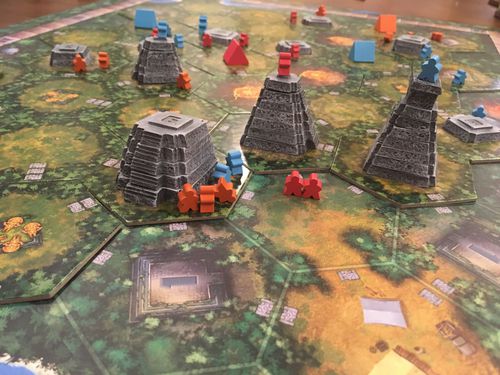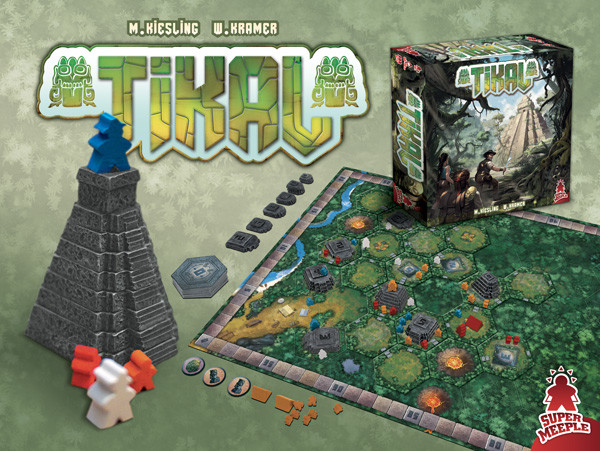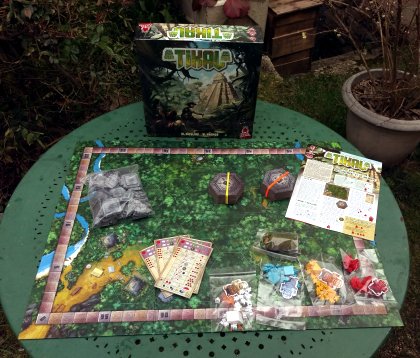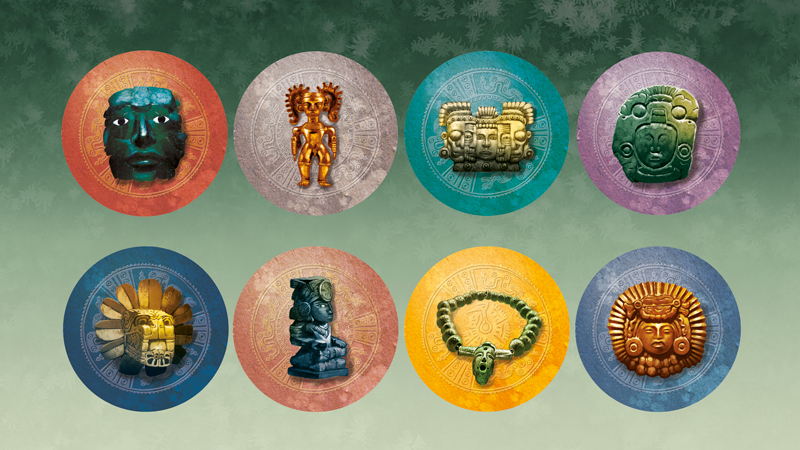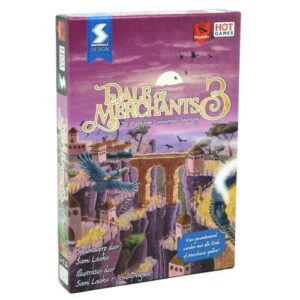Beschrijving
Min leeftijd: +10
Aantal spelers 2 a 4
Gem speelduur 90 min
Tikal is het eerste spel van de Mask Trilogy, ontworpen door Michael Kiesling en Wolfgang Kramer. Het verscheen oorspronkelijk in 1999 en won in datzelfde jaar de Duitse ‘Spiel des Jahres’-prijs. 19 jaar later is Tikal terug. Maar deze keer met coole 3D-harspootjes in plaats van de kartonnen pootjes van het origineel!
In Tikal verkennen spelers de jungle van Guatemala, op de oude Maya-site genaamd Tikal. The Mask Trilogy werkt met een actiepuntensysteem. Dit betekent dat spelers in Tikal elke beurt eerst een tegel trekken en plaatsen, en vervolgens 10 actiepunten gebruiken zoals ze willen. Met deze actiepunten proberen ze hun score te maximaliseren via twee aspecten van het tempelcomplex; tempels en schatten.
Wanneer spelers een tempel vinden, kunnen ze deze uitgraven om deze meer punten waard te maken. Maar pas op, want dit maakt de tempel ook interessanter voor andere spelers, die kunnen proberen jouw tempel over te nemen. Spelers kunnen hier ook schatten verzamelen en punten maximaliseren door middel van een vast verzamelsysteem.
Er zijn drie semi-willekeurige momenten in het spel waarin er een scoreronde is, waarbij spelers punten verzamelen voor de tempels die ze momenteel controleren (de meerderheid hebben) en de schatten die ze hebben verzameld. En er vindt een eindtelling plaats wanneer de laatste tegel op het bord wordt neergelegd. Wie de meeste punten heeft, wint het spel!
Tikal is the first game of the Mask Trilogy, designed by Michael Kiesling and Wolfgang Kramer. It originally published in 1999, and won the German ‘Spiel des Jahres’ price in that same year. 19 years later, Tikal is back. But this time, with cool 3D resin temple pieces instead of the cardboard temple pieces of the original!
In Tikal, players explore the jungle of Guatemala, at the ancient Maya site called Tikal. The Mask Trilogy works with an action point allowance system. This means that in Tikal, each turn players first draw and place a tile, and then use 10 action points as they wish. With these action points, they try to maximize their scoring through two aspects of the temple complex; temples and treasures.
When players find a temple, they can excavate it in order to make it worth more points. But beware, as this also makes the temple more interesting to other players, who can try to take over your temple. Players can also collect treasures and maximize points here through means of a set collection system.
There are three semi-random moments in the game when there is a scoring round, where players will collect points for the temples they currently control (have the majority) and the treasures they collected. And there is a final scoring when the last tile is layed out on the board. Whoever has the most points wins the game!


